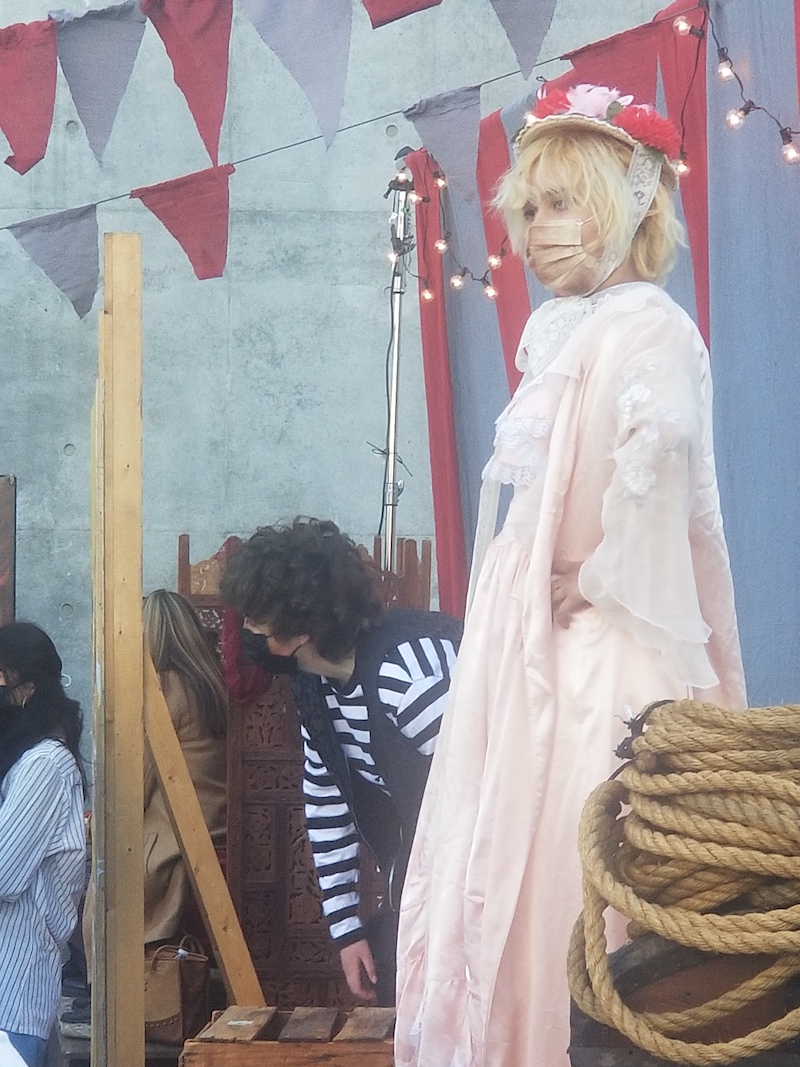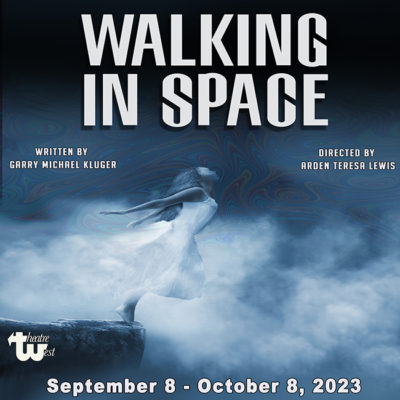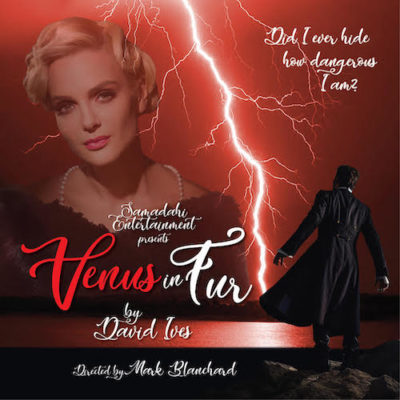Caligari’s Cabinet of Curiosities: Workshopping New Theater with Youth in the Age of AB5
by Socks Whitmore and Steven Leigh Morris
Ramón C. Cortines School of Visual and Performing Arts
Through March 19
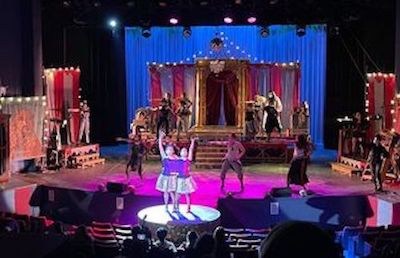
So why would Stewart opt to entrust her new script’s first staging to such an under-experienced group? The answer can be boiled down to three characters: AB5.
It’s not often that Stage Raw is invited to a high school production, but that’s precisely what happened on the opening weekend of Caligari’s Cabinet of Curiosities, a new jukebox musical that had its workshop premiere at the Ramón C. Cortines School of Visual and Performing Arts (unofficially known as VAPA by its students). Inspired by the infamous 1920 silent film The Cabinet of Dr. Caligari, the full-length show tells the story of the “mayhem, murder, magic and mystery” that follows a group of carnival performers struggling to survive in the back country of 1920s Louisiana, and the sinister hypnotist who turns them against each other.
The show was written by the established LA musical theater writer, Vanessa Claire Stewart, who is no stranger to musicals of her own making. In 2008, she premiered her Louis & Keely: Live at the Sahara, at Sacred Fools Theatre Company on a $7,500 budget under the stage actors’ union’s Los Angeles 99-Seat Plan. With the same actors (herself and Jake Broker, plus a five-piece band), the show transferred to the Geffen Playhouse with union contracts, and then played in Chicago. Four years later, Stewart’s play Stoneface was also birthed under the 99-Seat Theatre Plan, and transferred to the Pasadena Playhouse, with union contracts. (Her next musical to be workshopped, Deadly, ended its premiere run at Sacred Fools just months before the COVID-19 pandemic forced theaters to close their doors and transformed the show’s subsequent phase of development into a digital experiment at Webster Conservatory.)
Now live theater is back, and with professional level set design, choreography, and a concert hall boasting 927 seats for its enthusiastic audience, this workshop production of Caligari (directed and designed by veteran designer Joel Daavid) is far from the typical workshop or high school theater experience. But the educational environment is not entirely unnoticeable; the process of admitting guests is cumbersome and heavily delays the start time, some roles have been gender-swapped in order to accommodate the lack of lower voices in the school’s population, and the supporting ensemble of singer-dancers (in typical high school fashion) is where the weaker performers have been shoehorned—a significant issue for a show like Caligari that is heavily built on ensemble vocals and choreography. Because VAPA students are admitted via a lottery process, and no prior training or auditions are required to be considered, the pool of stage-ready talent available to this workshop production was clearly limited. So why would Stewart opt to entrust her new script’s first staging to such an under-experienced group? The answer can be boiled down to three characters: AB5.
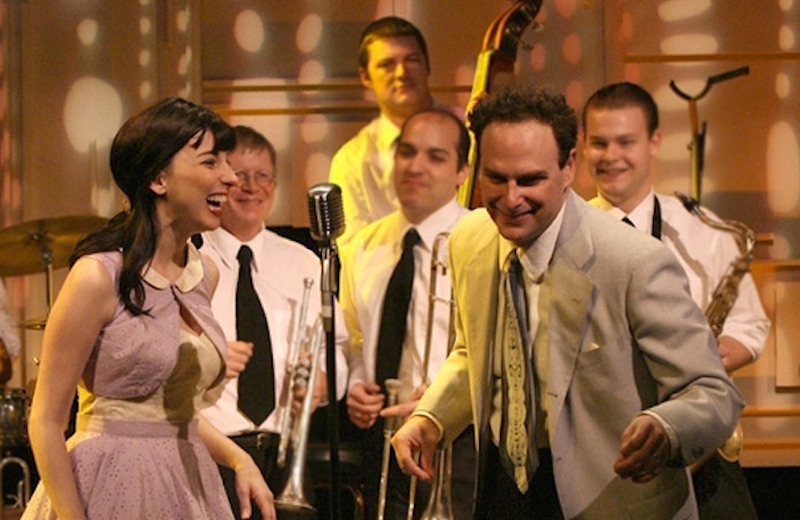
Assembly Bill 5 concerns the classification and re-classification of workers across the state, and it’s unlikely that Gonzalez was even considering her bill’s impact on non-profit arts organizations.
AB5 is the moniker for California State Assembly Bill 5, which went into effect on January 1, 2020. The legislation was authored by Assemblyperson Lorena Gonzalez (who has since left the Assembly to work for the American Federation of Labor). Though the rideshare industry, spearheaded by the multibillion dollar companies Uber and Lyft, was not named in the draft legislation, the companies were clearly among its targets. California’s State Attorney General filed a lawsuit against the companies in 2020 within months of a company’s breach of new legislation, an uncharacteristically fast and proactive move for State and local government authorities, and a fair indicator of how the rideshare industry was in the State’s rifle-scope. The case was never adjudicated because Uber and Lyft responded with a $90 million referendum on the November, 2020 ballot, asking Californians for an exemption from the legislation. A majority of voters took their side and the State was compelled to back off.
What does any of this have to do with developing a musical in a high school? Assembly Bill 5 concerns the classification and re-classification of workers across the state, and it’s unlikely that Gonzalez was even considering her bill’s impact on non-profit arts organizations. Until AB5’s implementation, that classification was made by hiring entities according to a murky 11-point Borello Test that determined whether a worker was an “employee” or an “independent contractor.” If actors’ work met the majority of these points, the producer could legitimately classify them as “volunteers” or “independent contractors.” This is how producers classified all actors working in theaters of 99-seats or fewer from 1972 to 2016 (until the union, Actors’ Equity Association, dissolved its Los Angeles 99-Seat Theatre Plan); and all actors in those same theaters from 1972 to 2020 (until California dissolved the Borello test, replacing it with a streamlined “ABC” test in accordance with the new Assembly Bill 5).
The general idea, even under the Borello Test, was that actors working in larger theaters were under contract and therefore responsible for showing up on time to rehearsals and performances. They were and remain unambiguously “employees,” and their employers are therefore subject to federal, state, and local minimum wage laws, taxes, unemployment insurance, etc.
But in theaters of 99-seats-or-less, in harmony with the Union’s Equity Waiver Code (1972-1989) and then its replacement, the Los Angeles 99-Seat Theatre Plan (1989-2016), actors, as volunteers or independent contractors were not under contract and, in theory, had the liberty to attend or not attend rehearsals or performances according to their own availability. They could also, in theory, leave a production at any time for any reason.
It was under these Union codes and former State law that Stewart was able to present Louis & Keely and Stoneface — like hundreds of other playwrights seeking to launch a new project with the aim of rare but potentially more lucrative opportunities for both the playwright and performers. Countless shows transferred from Union codes in LA to Union contracts: Deaf West’s productions of Big River and Spring Awakening both transferred to Broadway; John Pollono’s Small Engine Repair transferred from Rogue Machine to off-Broadway; and Oliver Goldstick’s Dinah Was transferred from the Coast Playhouse to off-Broadway.
Assembly Bill 5 has knocked out all of those opportunities by mandating that all actors be classified as “employees” with the consequence of small-theater producers absorbing a 30-50% spike in their annual budgets because of the attendant taxes and benefits they must now bankroll. And though venues such as The Fountain Theatre, with its $600,000 annual budget, report that they will meet the new financial challenges, the effects of this mandate are hitting theaters with annual budgets of under $300,000 particularly hard. Playwrights’ Arena and Skylight Theatre have merged, cutting productions from a combined eight per season to three. Pasadena’s Boston Court used 43 actors in its four-play 2015 season. For 2022, it’s using five actors for two plays. Before AB5, Sacred Fools Theater Company regularly used 40 to 50 actors for a four-five play season, but in 2022, the company’s announced season has only one play with four actors thus far.
Stewart says she can’t afford to develop a new musical with professional actors under AB5, which is why she turned to a high school. On the one hand, the idea to use youth performers to develop new works is an innovative strategy for emerging playwrights who don’t have the financial or logistic resources to pursue traditional development spaces. But when it comes to using footage of the play to shop it around, the cost of such a full-scale production doesn’t make sense for the quality of the archival product, which could potentially hurt the show’s chances for future opportunities. And with reduced operational capacity for small theaters due to the spike in their budgets, less spaces are available overall for the development of new work. Stewart says that she’s contemplating leaving California if there isn’t some legislative remedy to assist small theaters in meeting the financial burdens of AB5.
(One potential remedy — the second legislative attempt to redress the effects of AB5 on California’s smaller theaters — is Senate Bill 116, sponsored by Senator Anthony Portantino and endorsed by Actors’ Equity Association. The bill, still in the early stages, is otherwise known as the Equitable Payroll Fund.)
And yet, perhaps there is a silver lining: The chance to work with developing scripts is a unique opportunity for emerging thespians and their peers to gain experience in the world of new theater. There was something extraordinarily sweet about watching Stewart’s sometimes macabre musical in the hands of teenagers – not only the actors but the audience, which screamed in both fear and delight with each plot twist. Perhaps these young people can help show the importance of theater to our elected representatives.
CALIGARI’S CABINET OF CURIOSITIES is being performed at Grand Arts Concert Hall, 450 N Grand Ave, Los Angeles; Thurs.-Sat., 6 pm, thru March 19. https://www.onstage411.com/newsite/show/play_info.asp?show_id=6166 Running time: two hours and 30 minutes with one 30-minute intermission.
Note: This article has been updated to reflect the history of producers working in LA’s 99-seats-or-fewer seats , from 1972-2020, classifying actors as either “volunteers” or “independent contractors,” rather than just “independent contractors” as originally stated.


